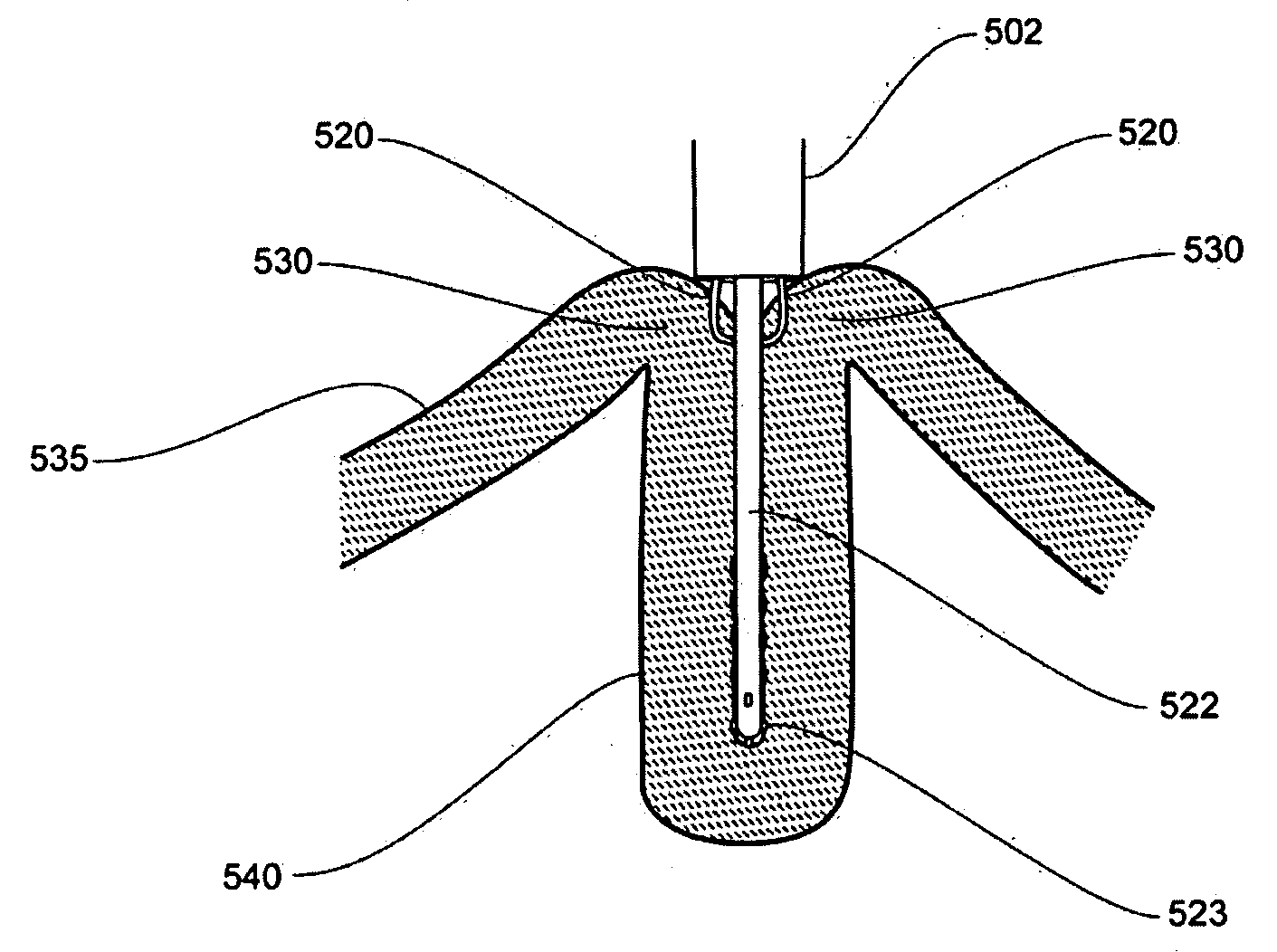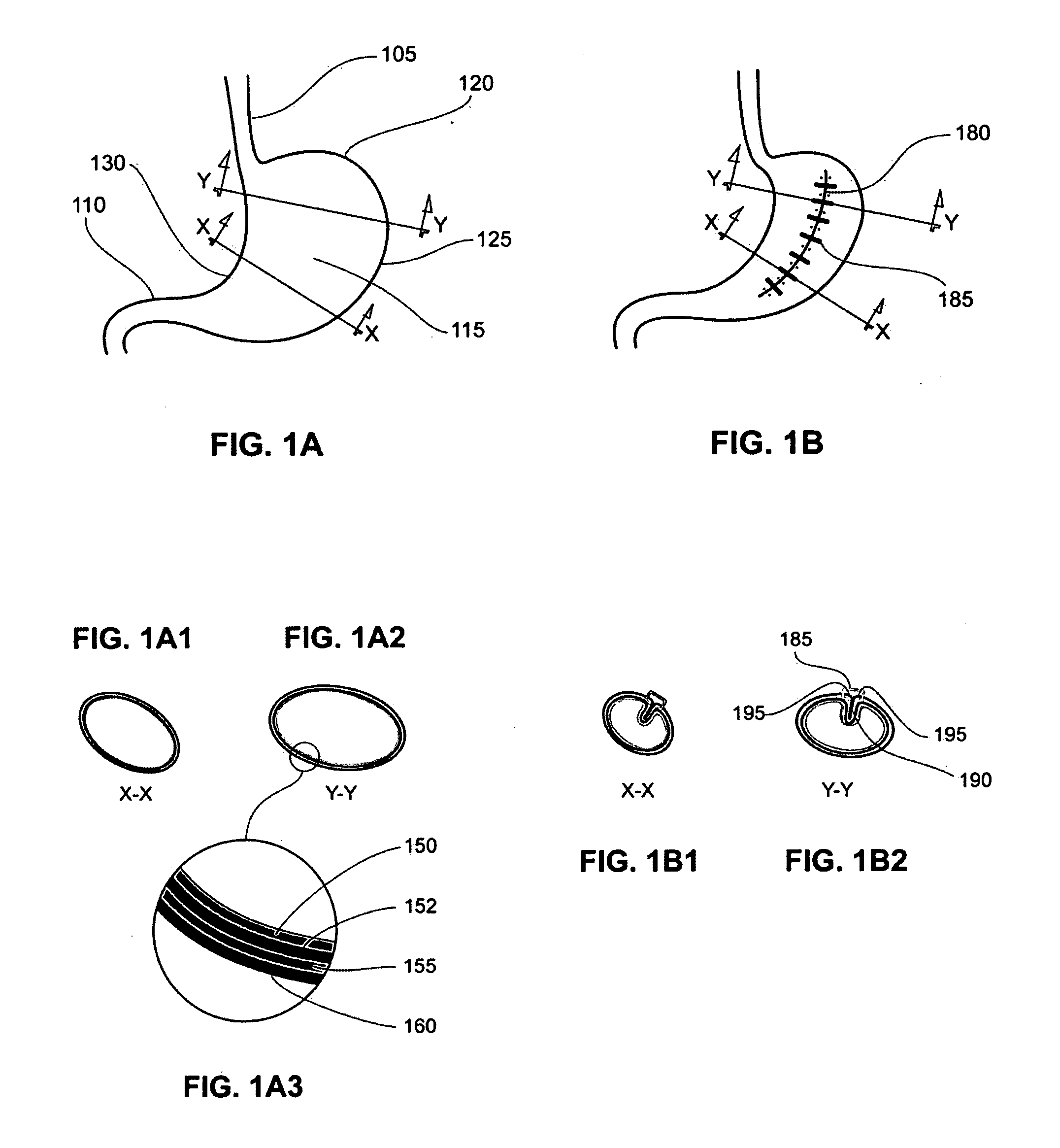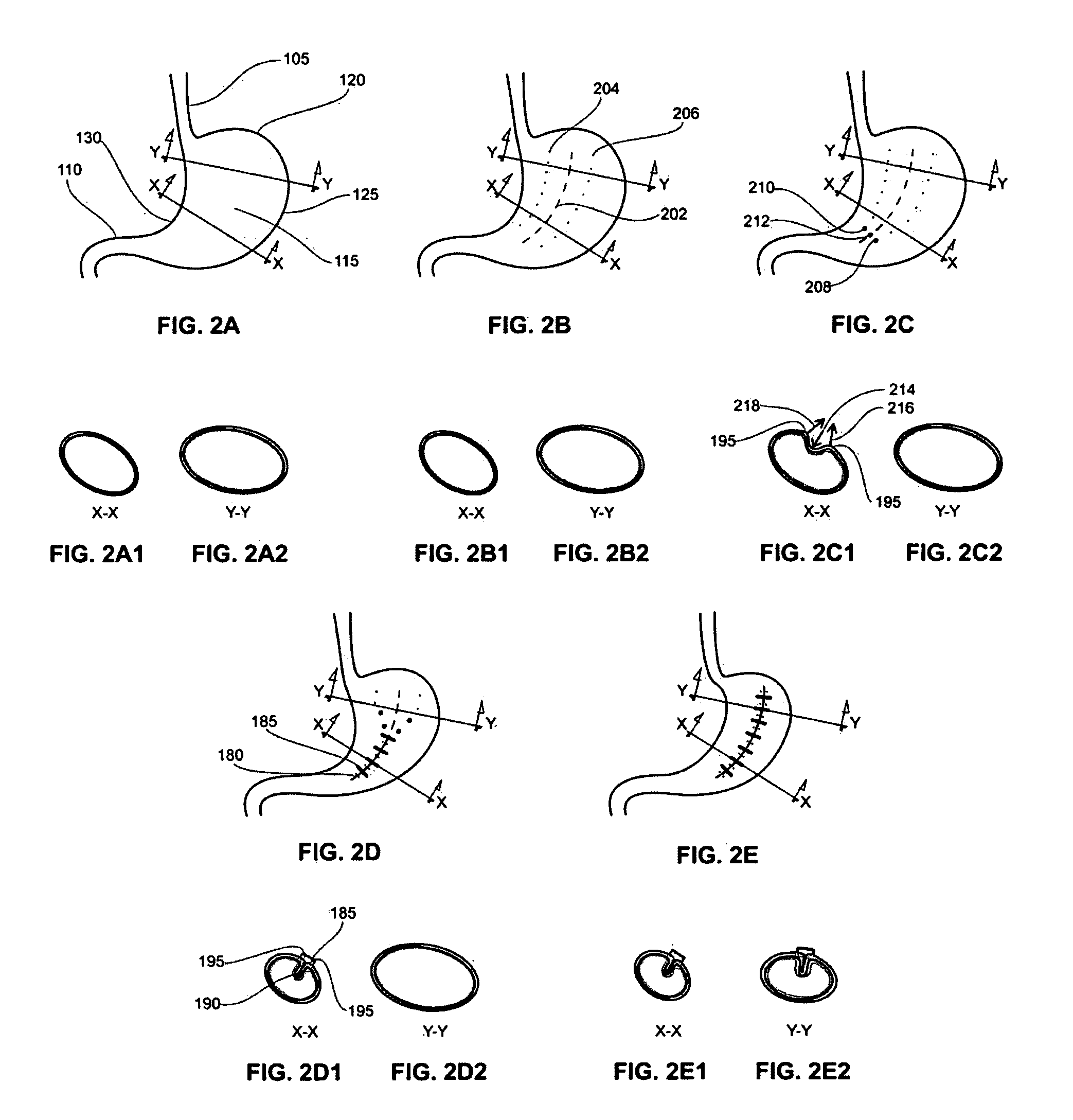The bilopancreatic diversion procedure, which combines bypass of most of the
small intestine with a partial
gastrectomy, is a combined
volume reduction and
malabsorption procedure that was developed in effort to reduce these risks, but it too had complications and its success was limited.
Despite the proven
efficacy of the Roux-en-Y procedure in terms of achieving
weight loss, and the recent laparoscopic improvements that have reduced the associated interventional risks, it remains a highly
invasive procedure with substantial rates of morbidity.
The rate of interventional mortality may be as high as 1%, and known complications include frequent pulmonary morbidity and anastomotic leaks that can be life threatening.
Furthermore, the
malabsorption component of the Roux-en-Y procedure can negatively affect health because of reduced
vitamin uptake, and the long-term consequences of malabsorption are not yet fully understood.
In any case,
weight loss results achieved with these procedures may sometimes approach those of the Roux-en-Y, however these procedures are not easily performed, are difficult if not impossible to reverse, and still suffer from risks of serious complications, most frequently related to failure or leakage of the staples, which can lead to dangerous infections and even death.
This procedure also suffers from a variety of limitations and shortcomings.
Additionally, long-term complications of the laparoscopic banding procedure may include tissue
erosion, slippage of the band, infection, or lack of effectiveness, frequently requiring removal of the band after a period of time.
Furthermore, unless it is surgically fastened to the
stomach wall, the
balloon is free floating and frequent complications such as obstruction, mucosal
erosion,
nausea,
vomiting and pain have been documented, with the result that intragastric balloons are usually removed within 6 months after initial placement.
While quite promising, endoscopic approaches for reducing
stomach have various limitations and shortcomings.
For example, they must be performed by
highly skilled endoscopic surgeons and involve the use of large, complicated endoscopic devices that require specialized training to deal with the
restricted access and small
working space.
In order to access the stomach internally, devices must be passed down the patient's
esophagus, accruing a substantial risk of perforating the
esophagus and injuring adjacent organs.
In addition, capturing and manipulating the tissue
layers and accurately applying the securing means during a transesophageal procedure is not only difficult but also hazardous, due to the
significant risk of accidental injury to other organs, bleeding, etc., when piercing (intentionally or accidentally) the stomach wall.
Because there is no extragastric
visualization in these procedures, there is no advance warning of a developing life threatening situation that may require a rescue operation.
Proper use and placement of fasteners that penetrate the
gastric wall is challenging and concentrates significant forces over a small surface area of
mucosal tissue, thereby potentially causing the suture, staple or anchor to leak or tear through the tissue, with potentially disastrous consequences.
It is well known that the fasteners used in these procedures frequently migrate, dislodge or even completely disappear over time, resulting in partial or complete failure to maintain the gastrointestinal
volume reduction, as well as possible complications.
These are significant limitations and shortcomings of prior art bariatric procedures involving tissue reconfiguration.
Previously known interventional procedures for treating obesity through gastrointestinal
volume reduction or malabsorption thus involve numerous risks, including life-threatening post-operative complications (e.g.
internal bleeding, infection), and long-term problems such as
diarrhea,
vitamin deficiency, electrolytic imbalance, unpredictable or insufficient
weight loss, and gastrointestinal
reflux disease (
GERD).
 Login to View More
Login to View More  Login to View More
Login to View More 


